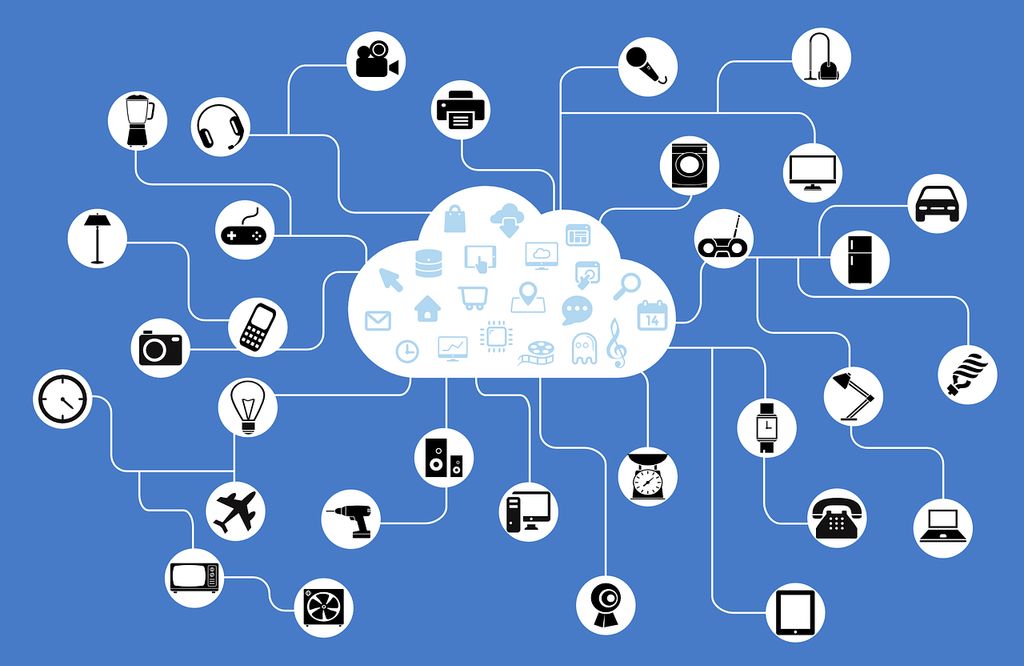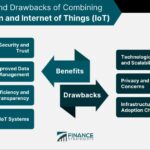The Internet of Things (IoT) refers to the network of interconnected devices, objects, and systems that communicate and share data with each other through the internet. It has revolutionized various industries by enabling seamless connectivity and automation. However, along with its numerous benefits, the IoT also comes with its fair share of drawbacks. In this article, we will explore the pros and cons of the Internet of Things and its impact on industries.
Key Takeaways
- Improved efficiency and productivity
- Enhanced convenience and automation
- Cost savings and resource optimization
- Privacy and security concerns
- Complexity and interoperability challenges
What is the Internet of Things?

Definition of the Internet of Things
The Internet of Things (IoT) refers to the network of physical devices, vehicles, appliances, and other objects embedded with sensors, software, and connectivity, enabling them to collect and exchange data. These devices are connected to the internet, allowing them to communicate and interact with each other, as well as with humans. IoT technology has the potential to revolutionize various industries by enabling automation, data-driven decision-making, and improved efficiency. It has already found applications in sectors such as healthcare, transportation, and manufacturing.
How the Internet of Things Works
The Internet of Things (IoT) is revolutionizing healthcare by enabling the connection and communication of various medical devices and systems. This connectivity allows for real-time monitoring, remote patient care, and efficient data collection and analysis. IoT devices such as wearable sensors, smart implants, and remote monitoring systems are transforming the healthcare industry by improving patient outcomes, reducing healthcare costs, and enhancing the overall quality of care. With the IoT, healthcare providers can remotely monitor patients’ vital signs, track medication adherence, and receive alerts for potential health issues. This technology has the potential to revolutionize healthcare delivery and improve patient outcomes.
Pros of the Internet of Things

Improved Efficiency and Productivity
The Internet of Things (IoT) has revolutionized the way we live and work. By connecting everyday objects to the internet, IoT enables seamless communication and data exchange between devices, leading to improved efficiency and productivity. With IoT, businesses can automate processes, monitor operations in real-time, and make data-driven decisions. For example, smart home systems like OpenHAB allow homeowners to control and manage various devices, such as lights, thermostats, and security systems, from a single interface. This not only saves time but also enhances convenience and streamlines daily routines. Moreover, IoT enables predictive maintenance, where sensors collect data on equipment performance and notify maintenance teams when repairs or replacements are needed, minimizing downtime and optimizing productivity.
Enhanced Convenience and Automation
Enhanced convenience and automation are key benefits of the Internet of Things (IoT). With IoT devices and systems, tasks that were once manual and time-consuming can now be automated, saving individuals and businesses valuable time and effort. For example, smart home devices like thermostats, lighting systems, and security cameras can be controlled remotely through smartphone apps, allowing homeowners to adjust settings and monitor their homes from anywhere. This level of convenience and control enhances the overall living experience and provides peace of mind.
Additionally, IoT technology enables seamless integration and communication between devices, creating a connected ecosystem that can work together to automate processes. For instance, in a smart office environment, IoT sensors can monitor occupancy levels and adjust lighting and temperature settings accordingly. This not only improves energy efficiency but also enhances employee comfort and productivity.
Moreover, the automation capabilities of IoT extend beyond individual devices and systems. IoT platforms and cloud-based services enable the aggregation and analysis of data from multiple sources, allowing for intelligent decision-making and predictive maintenance. This can result in cost savings and improved operational efficiency for businesses across various industries.
In summary, enhanced convenience and automation are significant advantages of the Internet of Things. By leveraging IoT technology, individuals and organizations can streamline processes, save time and effort, and improve overall efficiency and productivity.
Cost Savings and Resource Optimization
One of the key benefits of the Internet of Things (IoT) is its ability to drive cost savings and resource optimization. By connecting devices and systems, organizations can gather and analyze data in real-time, enabling them to make more informed decisions and streamline operations. For example, in the manufacturing industry, IoT sensors can monitor equipment performance and detect potential issues before they lead to costly breakdowns. This proactive maintenance approach not only reduces downtime but also extends the lifespan of machinery, resulting in significant cost savings. Additionally, IoT-enabled energy management systems can optimize energy usage in buildings, reducing utility costs and promoting sustainability. Overall, the IoT offers organizations the opportunity to optimize their resources and achieve cost efficiencies in various aspects of their operations.
Cons of the Internet of Things

Privacy and Security Concerns
One of the main concerns surrounding the Internet of Things is privacy and security. With the increasing number of connected devices, there is a growing risk of unauthorized access to personal information. Hackers can exploit vulnerabilities in IoT devices to gain access to sensitive data, such as personal and financial information. This raises concerns about the protection of user privacy and the potential for identity theft.
Another concern is the security of IoT devices themselves. Many IoT devices have limited security measures in place, making them vulnerable to cyber attacks. These attacks can range from simple data breaches to more sophisticated attacks that can disrupt critical infrastructure. It is crucial for manufacturers and developers to prioritize security in IoT devices to mitigate these risks.
In addition to privacy and security concerns, there are also concerns about the reliability and accuracy of IoT devices. For example, in the field of fitness tracking, there have been instances where wearable devices have provided inaccurate data, leading to misleading health and fitness information. This highlights the importance of thorough testing and quality assurance in the development of IoT devices.
To address these concerns, it is essential for individuals and organizations to take proactive measures to protect their privacy and secure their IoT devices. This includes regularly updating firmware and software, using strong passwords, and being cautious about sharing personal information. Additionally, industry standards and regulations can play a significant role in ensuring the security and privacy of IoT devices.
Complexity and Interoperability Challenges
The Internet of Things (IoT) introduces a new level of complexity and interoperability challenges. With the increasing number of connected devices and systems, ensuring seamless communication and integration becomes crucial. One of the key challenges is the compatibility between different IoT platforms and protocols. As there is no standardized framework, organizations often face difficulties in integrating devices from different manufacturers or implementing cross-platform solutions. This can lead to interoperability issues and hinder the full potential of IoT deployments. Additionally, the complexity of managing a large-scale IoT ecosystem can be overwhelming. From device provisioning and configuration to data management and security, organizations need to navigate through various complexities to ensure a smooth and efficient IoT implementation.
Dependency on Internet Connectivity
One of the key considerations when it comes to the Internet of Things is its dependency on internet connectivity. As the name suggests, the Internet of Things relies on a network connection to function effectively. This means that without a stable and reliable internet connection, the devices and systems connected to the Internet of Things may not be able to communicate with each other or access the necessary data.
This dependency on internet connectivity can pose challenges in certain situations. For example, in remote areas with limited internet access, the full potential of the Internet of Things may not be realized. Similarly, in cases of internet outages or disruptions, the connected devices may not be able to perform their intended functions.
It is important for individuals and organizations to consider the implications of this dependency on internet connectivity when adopting and implementing Internet of Things solutions. It may be necessary to invest in robust internet infrastructure and backup systems to ensure uninterrupted connectivity and optimal performance of the Internet of Things ecosystem.
Impact of the Internet of Things on Industries

Healthcare
The Internet of Things (IoT) has the potential to revolutionize the healthcare industry by improving patient care, streamlining processes, and enhancing medical research. With IoT devices, healthcare providers can remotely monitor patients, collect real-time data, and make informed decisions based on the insights gained. This enables early detection of health issues, personalized treatment plans, and improved patient outcomes. Additionally, IoT technology can automate routine tasks, such as inventory management and medication tracking, freeing up healthcare professionals to focus on delivering quality care. However, the convenience offered by IoT in healthcare also raises concerns about privacy and security. As more devices are connected to the internet, the risk of data breaches and unauthorized access increases. It is crucial for healthcare organizations to implement robust security measures and adhere to strict privacy regulations to protect sensitive patient information.
Transportation
The Internet of Things (IoT) has revolutionized the transportation industry, making it more efficient and convenient. With IoT devices and sensors embedded in vehicles, transportation systems can gather real-time data on traffic patterns, vehicle performance, and driver behavior. This data enables transportation companies to optimize routes, reduce fuel consumption, and improve overall operational efficiency. Additionally, IoT technology has enabled the development of autonomous vehicles, which have the potential to transform transportation into a safer and more practical mode of transportation. These vehicles can communicate with each other and with infrastructure, allowing for coordinated movement and reducing the risk of accidents. Furthermore, IoT-enabled transportation systems can provide passengers with personalized services, such as real-time updates on arrival times and customized travel recommendations. Overall, the Internet of Things has the potential to greatly enhance the transportation industry, offering improved efficiency, safety, and convenience.
Manufacturing
The Internet of Things (IoT) has revolutionized the manufacturing industry, enabling the creation of innovative products and transforming traditional factories into smart, connected environments. By integrating sensors, actuators, and intelligent devices, manufacturers can gather real-time data on production processes, equipment performance, and product quality. This data can be analyzed to identify inefficiencies, optimize production workflows, and improve overall operational efficiency. With IoT-enabled manufacturing, companies can achieve higher levels of automation, reduce downtime, and enhance product quality.
Conclusion
In conclusion, the Internet of Things (IoT) has revolutionized the way we interact with technology. It offers numerous benefits, such as increased convenience, improved efficiency, and enhanced connectivity. However, it also presents challenges, including privacy and security concerns, as well as potential job displacement. It is important for individuals and organizations to weigh the pros and cons before fully embracing the IoT. With proper safeguards and regulations in place, the IoT has the potential to greatly enhance our lives and drive innovation in various industries.
Frequently Asked Questions
What is the Internet of Things?
The Internet of Things (IoT) refers to the network of physical devices, vehicles, appliances, and other objects embedded with sensors, software, and connectivity, which enables these objects to connect and exchange data.
How does the Internet of Things work?
The Internet of Things works by connecting devices to the internet and enabling them to communicate with each other through sensors and actuators. These devices collect and exchange data, allowing for automation, remote control, and data analysis.
What are the pros of the Internet of Things?
The pros of the Internet of Things include improved efficiency and productivity, enhanced convenience and automation, and cost savings and resource optimization.
What are the cons of the Internet of Things?
The cons of the Internet of Things include privacy and security concerns, complexity and interoperability challenges, and dependency on internet connectivity.
How does the Internet of Things impact the healthcare industry?
The Internet of Things has a significant impact on the healthcare industry by enabling remote patient monitoring, improving the efficiency of healthcare delivery, and facilitating the development of personalized medicine.
What is the impact of the Internet of Things on transportation?
The Internet of Things revolutionizes transportation by enabling smart traffic management, improving vehicle safety and efficiency, and facilitating the development of autonomous vehicles.




